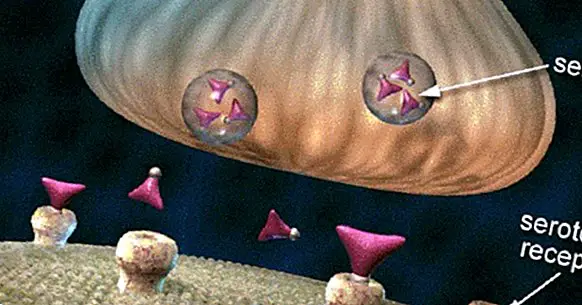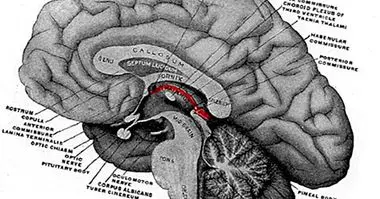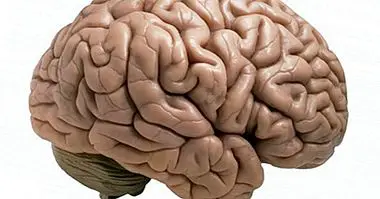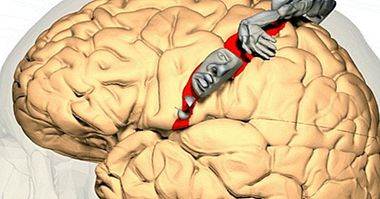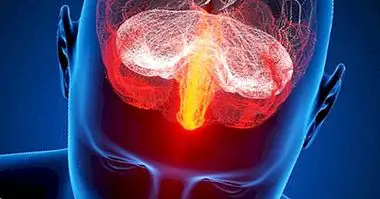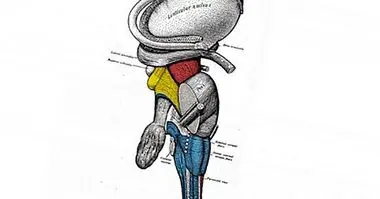Neural receivers: what they are, types and functioning
The functioning of our nervous system houses processes of transmission of nerve impulses and highly complex chemical substances, with neurotransmission being the main phenomenon that allows neurotransmitters to travel throughout our nervous system, allowing from the correct functioning of the organs to the emotional regulation .
One of the main components involved is this neurotransmission are neural receptors or neuroreceptors . Throughout this article we will discuss its main characteristics and functioning, as well as the different classifications and main types.
- Related article: "Parts of the Nervous System: functions and anatomical structures"
What are neuronal receptors?
Within all the framework that makes possible the transmission of the chemical substances proper to the processes of neurotransmission, we find neuronal receptors or neuroreceptors. These small elements are protein complexes, that is, they are made up of proteins, and they are located in the cell membranes of the neuron .
During neurotransmission, the chemicals found in the intercellular space, such as neurotransmitters, meet with the cell membrane, along which the neuronal receptors are located. When a neurotransmitter trips over its corresponding receptor, it will join and generate a series of changes inside the cell.
Therefore, a membrane receptor is an essential piece of molecular machinery that allows chemical communication between the cells. It is necessary to specify that a neuronal receptor is a specific type of receptor that only binds exclusively with a series of neurotransmitters and not with other types of molecules.
We can find neuroreceptors in both presynaptic cells and postsynaptic cells. In the first, are the so-called autoreceptors , which are destined to recapture the neurotransmitters released by that same cell, providing feedback and mediating the amount of neurotransmitters released.
However, when these are found in postsynaptic cells, neuronal receptors they receive signals that can trigger an electric potential . This regulates the activity of ion channels. The influx of ions along open ion channels due to chemical neurotransmission, can change the membrane potential of a neuron, which results in a signal traveling along the axon and transmitted between neurons and even to the entire neural network.
Is it equal to a sensory receptor?
The answer is no. While neuronal receptors are small agents that are found in the membranes of cells and whose mission is to transmit information by reuptake of specific neurotransmitters , the sensory receptors refer to the specialized nerve endings that are found in the sensory organs.
Throughout our body (skin, eyes, tongue, ears, etc.) we find thousands of nerve endings whose main mission is to receive stimuli from the outside and transport this information to the rest of the nervous system, thus causing all kinds of body responses and sensations.
- You may be interested: "What is the synaptic space and how does it work?"
Types of neuronal receptors according to the form of action
There are two main types of neuroreceptors which can be classified according to their functioning. These are the ionotropic receptors and the metabotropic receptors.
1. Ionotropic receptors
By ionotropic receptors we understand those receptors through which the ions can pass . They are considered as a group of transmembrane channels that open or close in response to the union of a chemical messenger, ie a neurotransmitter, which is called "ligand".
The binding site of these ligands in the receptors is localized, in a usual manner, in a different portion of the protein. The direct union between the receptor and the ligand, causes the opening or closing that is characteristic of the ion channels; in comparison with the metabotrópicos that use the calls second messengers.
The functioning of ion channels It will also be different depending on the voltage , that is, they open or close depending on the potential of the membrane. In the same way, there are ion channels that activate by stretching, which means that they perform one function or another depending on the mechanical deformation of the cell membrane.
2. Metabotropic receptors
In contrast to ionotropic receptors that carry out direct transmission, metabotropic receptors they do not have channels, so they use a second messenger that is inside the cell. That is, they perform an indirect chemical neurotransmission.
These receivers they are usually coupled to G proteins and, while ionic receptors can excite or inhibit a response, metabotropic receptors have no inhibitory or excitatory functions, but rather they exert a broad group of functions.
Enter the main functions of the metabotropic receptors are those of modulating the action of the excitatory and inhibitory ion channels, as well as the activation of a cascade of signals that releases calcium stored in the reserves of the cell.
Types according to the neurotransmitter
In addition to the classification of neurotransmitters according to the way in which they carry out the transmission of information, they can also be classified according to the neurotransmitter to which they are to be coupled.
These are some of the main classes of neuronal receptors:
1. Adrenergic
They are activated by the catecholamines adrenaline and noradrenaline.
2. Dopaminergic
They play an important role in controlling emotions by being linked to dopamine.
3. GABAergico
Associated with the neuroreceptor GABA, it is essential in the action of some drugs such as benzodiazepines, some epileptics and barbiturates.
4. Glutamatergic
They can be divided into ionotropic N-methyl-daspartate (NMDA) receptors and non-NMDA receptors.
5. Cholinergic
They are acetylcholine receptors (ACh) and subdivided into nicotinic (N1, N2) and muscarinic.
6. Opioid
They bind to the opioid neurotransmitters both endogenous and exogenous and their activation can cause from feeling of euphoria to sedation or analgesic effects
7. Serotoninergic
They are serotonin (5-HT) receptors and there are at least 15 subtypes within this classification.

